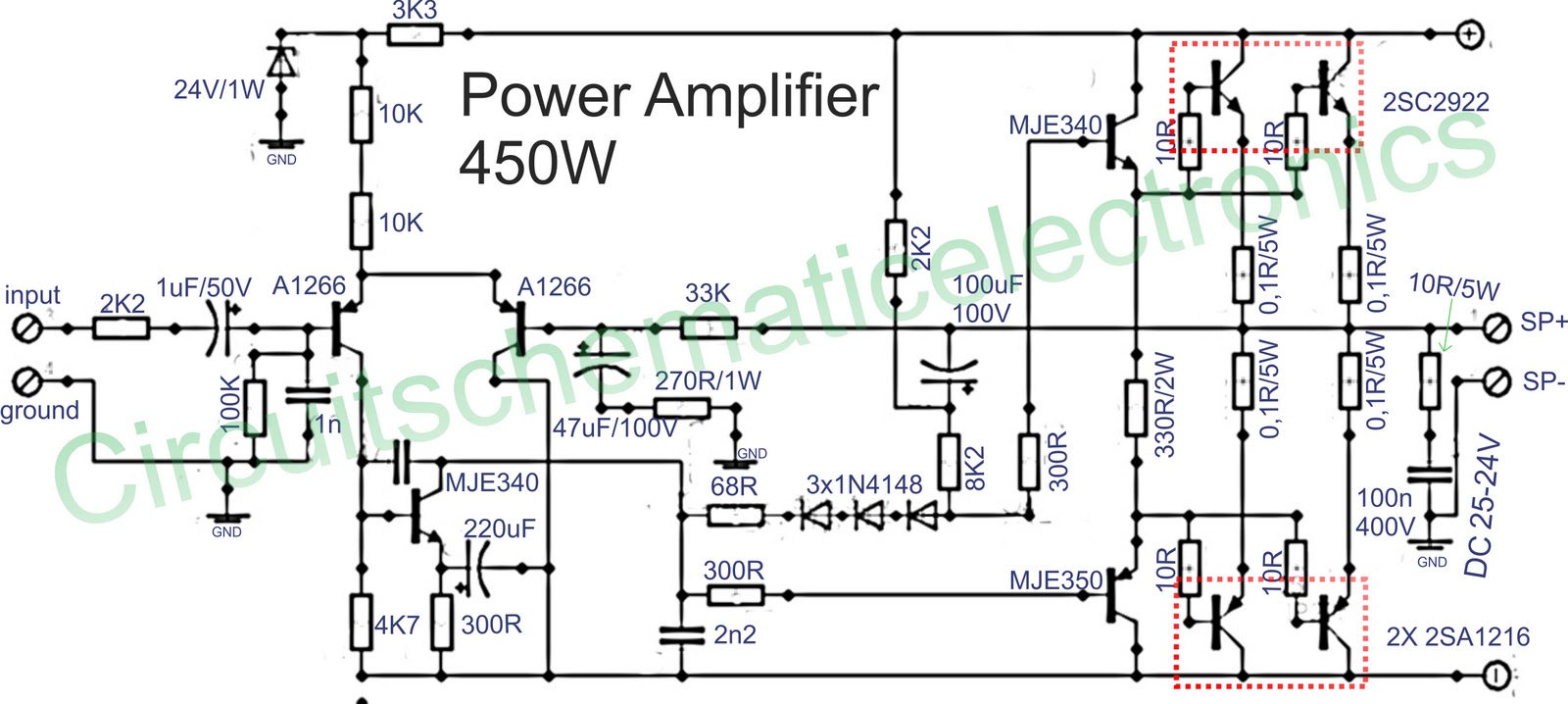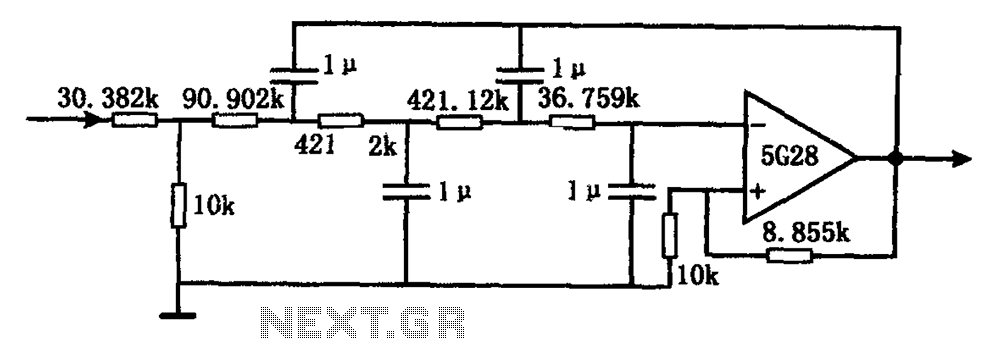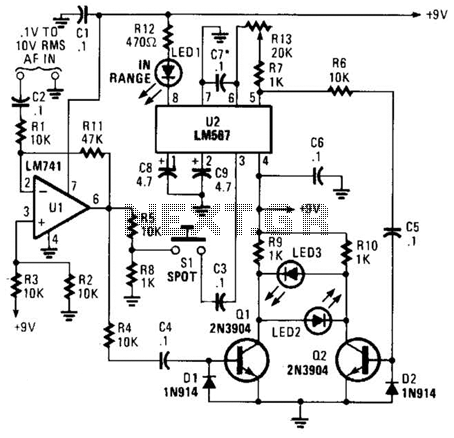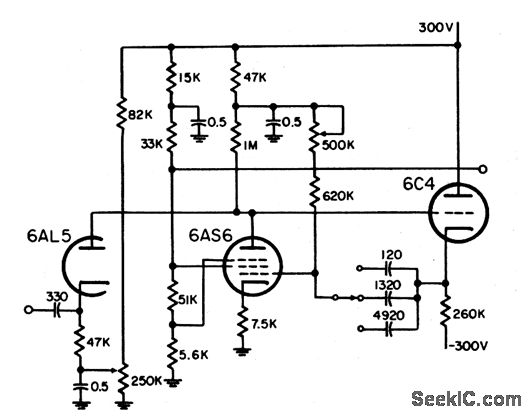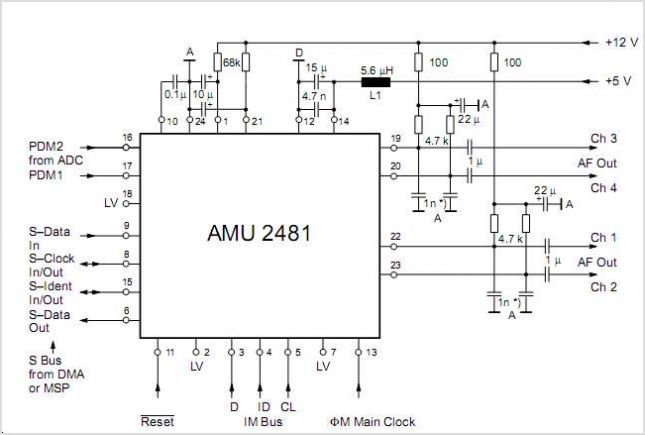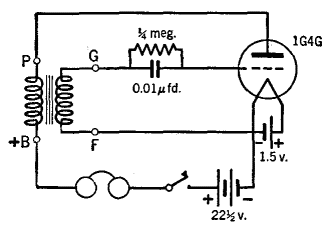
VARIABLE BANDPASS AUDIO FILTER
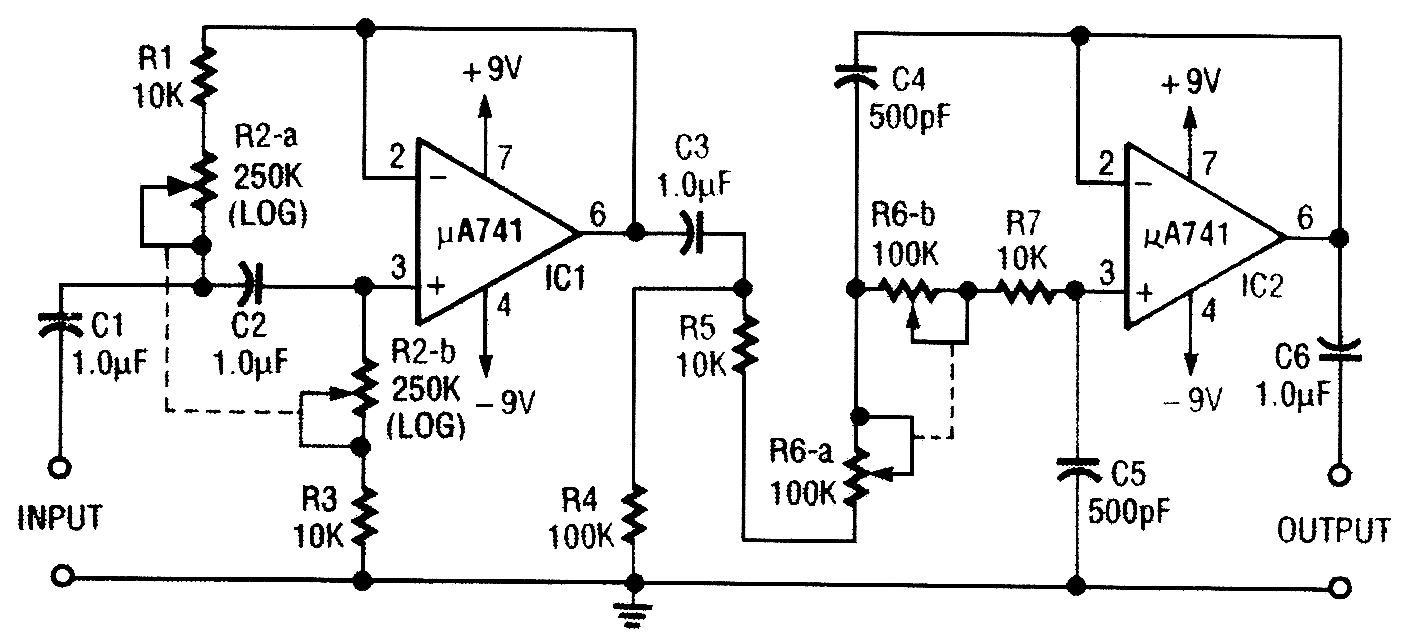
This circuit is a variable audio bandpass filter that features a low cutoff frequency adjustable from approximately 25 Hz to 700 Hz and a high cutoff frequency adjustable from 2.5 kHz to over 20 kHz. The roll-off rate is 12 dB per octave on both the high and low ends. R2-a-b and RG-a-b are ganged potentiometers used to set the lower and upper cutoff frequencies, respectively.
The variable audio bandpass filter circuit is designed to allow signals within a certain frequency range to pass while attenuating frequencies outside this range. This is particularly useful in audio processing applications where specific frequency bands need to be enhanced or attenuated.
The low cutoff frequency, adjustable between 25 Hz and 700 Hz, is achieved through the use of a ganged potentiometer (R2-a-b). This component allows for fine-tuning of the filter's response at the lower end of the spectrum, ensuring that the desired bass frequencies can be filtered effectively.
Similarly, the high cutoff frequency, which can be set from 2.5 kHz to over 20 kHz, is controlled by another ganged potentiometer (RG-a-b). This enables the user to eliminate unwanted high-frequency noise while preserving the important audio signals within the desired range.
The roll-off characteristic of 12 dB per octave on both ends indicates that for every octave increase in frequency, the output signal level decreases by 12 dB. This steep roll-off ensures a more precise filtering effect, helping to maintain audio clarity and quality by reducing the influence of frequencies outside the specified bandpass range.
The circuit may also include additional components such as capacitors and resistors to shape the filter's response further, providing a more tailored audio experience. The design can be implemented using operational amplifiers, which serve to amplify the signals while maintaining the desired frequency characteristics.
Overall, this variable audio bandpass filter circuit is a versatile tool for audio engineers and enthusiasts looking to manipulate sound frequencies for various applications, including music production, live sound reinforcement, and audio signal processing.This circuit is a variable audio bandpass filter that has a low cutoff variable from about 25 Hz to 700 Hz and a high cutoff variable from 2. 5 kHz to over 20 kHz. Rolloff is 12 dB/octave on both high and low ends. R2-a-b and RG-a-b are ganged potentiometers for setting lower and upper cutoff fre-quencies, respectively.
🔗 External reference
The variable audio bandpass filter circuit is designed to allow signals within a certain frequency range to pass while attenuating frequencies outside this range. This is particularly useful in audio processing applications where specific frequency bands need to be enhanced or attenuated.
The low cutoff frequency, adjustable between 25 Hz and 700 Hz, is achieved through the use of a ganged potentiometer (R2-a-b). This component allows for fine-tuning of the filter's response at the lower end of the spectrum, ensuring that the desired bass frequencies can be filtered effectively.
Similarly, the high cutoff frequency, which can be set from 2.5 kHz to over 20 kHz, is controlled by another ganged potentiometer (RG-a-b). This enables the user to eliminate unwanted high-frequency noise while preserving the important audio signals within the desired range.
The roll-off characteristic of 12 dB per octave on both ends indicates that for every octave increase in frequency, the output signal level decreases by 12 dB. This steep roll-off ensures a more precise filtering effect, helping to maintain audio clarity and quality by reducing the influence of frequencies outside the specified bandpass range.
The circuit may also include additional components such as capacitors and resistors to shape the filter's response further, providing a more tailored audio experience. The design can be implemented using operational amplifiers, which serve to amplify the signals while maintaining the desired frequency characteristics.
Overall, this variable audio bandpass filter circuit is a versatile tool for audio engineers and enthusiasts looking to manipulate sound frequencies for various applications, including music production, live sound reinforcement, and audio signal processing.This circuit is a variable audio bandpass filter that has a low cutoff variable from about 25 Hz to 700 Hz and a high cutoff variable from 2. 5 kHz to over 20 kHz. Rolloff is 12 dB/octave on both high and low ends. R2-a-b and RG-a-b are ganged potentiometers for setting lower and upper cutoff fre-quencies, respectively.
🔗 External reference
